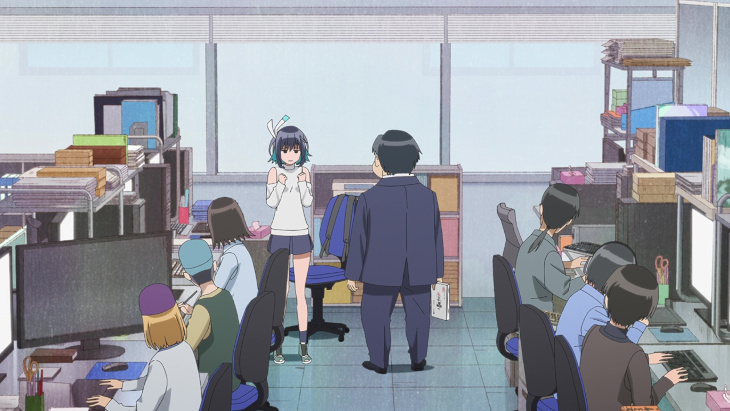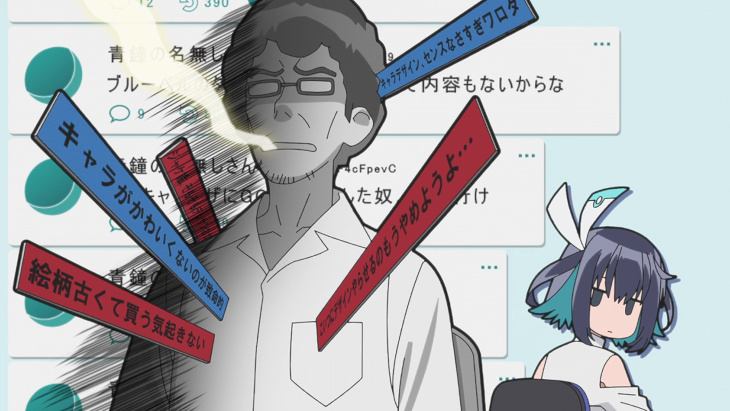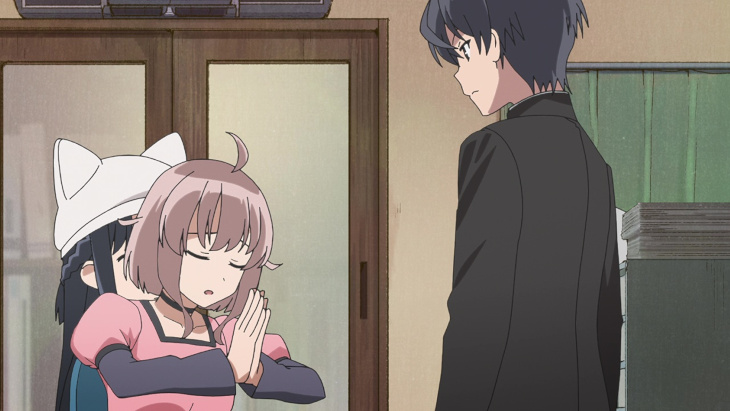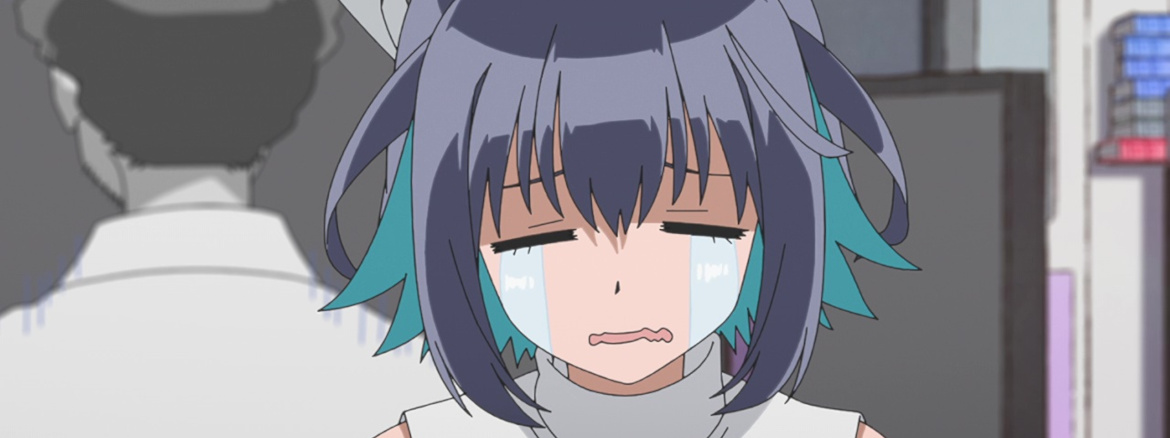
“Seeing cute girls really cheers me up, but the girls in these games are more than just cute. They cry, laugh, face lots of worries, but despite that, they stay strong and try their best…”
Due to the massive volume of shows coming out this season, I’ve been a little discerning about which shows I’m sampling. Certainly not everything I sample will be of premium quality, but there aren’t many shows that I’m going into completely blind. Technically that’s true of 16bit Sensation: Another Layer, but after reading a questionably written summary of the premise, I felt like I’d somehow lost understanding of what this show was. I knew it was a comedy about the construction of video games, but the details surrounding it seemed a bit nebulous. As a premise, that doesn’t immediately draw me in, but it also sounds… much weirder. I could swear that the premise mentioned time travel somewhere along the way. So, honestly, this show got me to watch it out of sheer curiosity as to what the hell it was. Now that I’ve watched it, I have answers to my questions, but it’s not a show I’m interested in. If you’re interested in early 90’s game productions, particularly those involving bishojo, then this might strike a chord with you. However, I found that 16bit Sensation: Another Layer falls down a bottomless pitfall roughly the exact size and shape of its main character.

The show follows Konoha Akisato, a young artist for a small bishojo games company that largely produces cheap bargain bin visual novels. One day, as she bemoans the decline of the industry, a retro game suddenly transports her back to the golden age of bishojo games, the early 90s. There is one central issue that prevented this show from ever working for me. Konoha is insufferable. She’s loud, bullish, and rambles about her interests like a grade schooler, as if she says everything that enters her mind, regardless of whether it connects to the previous thought. An annoying character can be a detriment to any story, but it can become a death knell when the character is called upon to sustain the narrative. Discounting a brief cold open, the show spends more than 15 minutes of screentime in the modern day, with only Konoha’s character to carry it. It was awful. The character is exceedingly whiny and judgmental, and tends to shout or scream unnecessarily. For anyone with a hankering for a gender-swapped version of Asta from Black Clover, have I got a show/headache for you!

The production is helmed by Studio Silver, a company I’m willing to bet you’ve never heard of. Surprisingly, the studio is more than 20 years old, but they’ve rarely produced a series, instead focusing on serving as support staff on projects. Their biggest claim to fame was their recent adaptation of We Never Learn. I’m not about to praise the production values, but I’ve certainly seen worse. However, I do have some complaints, and it might sound like I’m just piling everything on the character of Konoha, but that’s okay. She deserves it. I hate her character design. This is a character who is supposed to be an adult in the workforce, and she looks like a child. That’s a common aesthetic choice in anime, but this is at odds with the style in which the show’s other characters are drawn. Likewise, she has an annoying hair color that blends light blue roots with dark blue tips, and it looks wildly out of place against the other muted character designs. The OP is shown at the end of the episode, and it’s fine, but it further highlights how Konoha’s design is significantly different from every other main character, including the female ones. It may seem like I’m fixated on this one character, but for the overwhelming majority of this premiere, she is the only main character. They chose to center nearly all of this episode around this black hole that sucks up all patience.
Before I wrap up, a few Notes and Nitpicks:
- It’s worth noting that neither the Wikipedia page nor the ANN page for this show/manga offer any description of the plot. That’s a bit of a rarity for non-anime originals, but it explains why I couldn’t easily get a sense of the plot prior to airing.
- The show features the boxes of some real visual novels, including Kanon, and I’m a little confused by the licensing surrounding such a move. Furthermore, even if they got Key’s permission to use the game in the show, wouldn’t that complicate licensing overseas, or do they act as their own distributors?
- There are some odd magical elements at play in this episode. The obvious one is the time travel, but there is also an appearing and disappearing game shop run by an old woman. It’s an odd detail to include, and it doesn’t add much to the plot, aside from allowing Konoha to ramble even more about games.
- Part of me hates that I’m complaining about a female character who works in the games industry being whiny and opinionated, but this episode feels like such an insult to the many women who endure such a toxic industry. Here, her biggest, sniveling complaints are that “they don’t make ‘em like they used to.”
- Strangely, I could think of the name “Asta” instantly, but it took me almost a minute to remember the name Black Clover.
It is a peculiar feeling to start an episode with the sense you may have made a mistake, and then watch that feeling gradually get reinforced as it continues along. 16bit Sensation: Another Layer’s problem is simple, but it’s an issue that pervades every element of the viewing experience. Konoha is an intolerable lead, and given the material at play, I’m struggling to come up with a worse way to sell this show to viewers.
Score: 1.5/5




Add comment